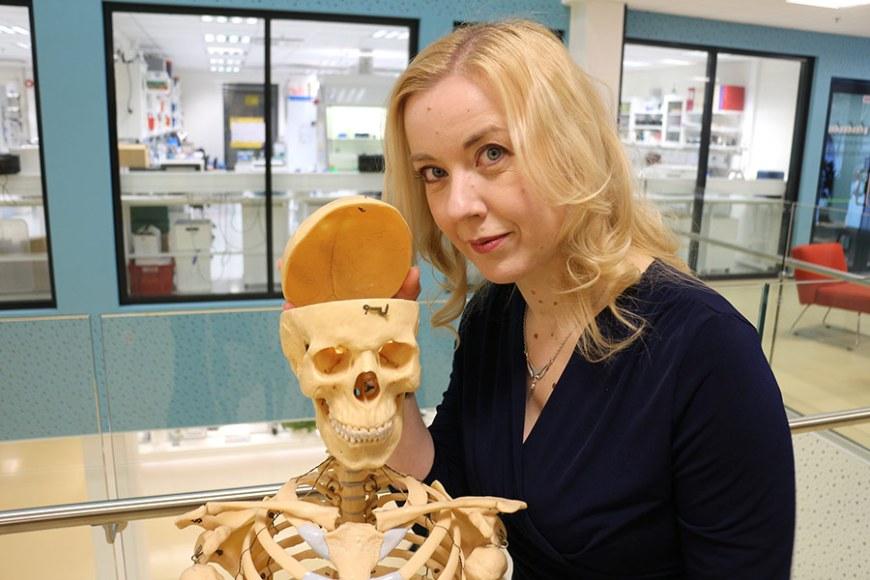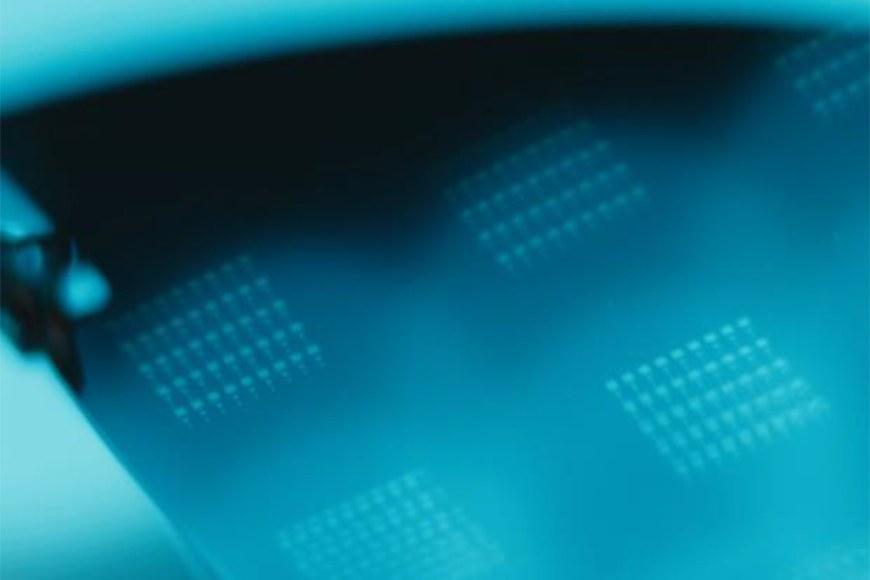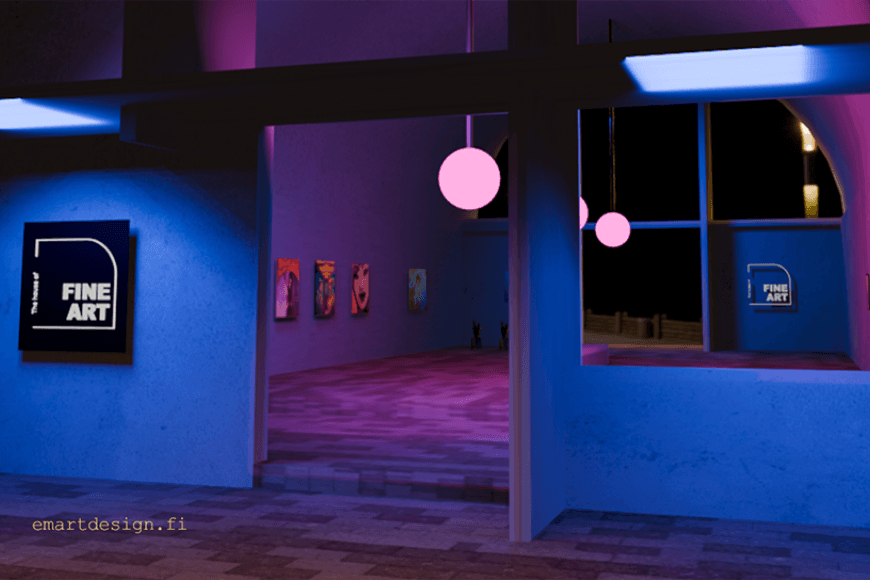Researchers discovered a way to bend molecules indirectly with safe red light
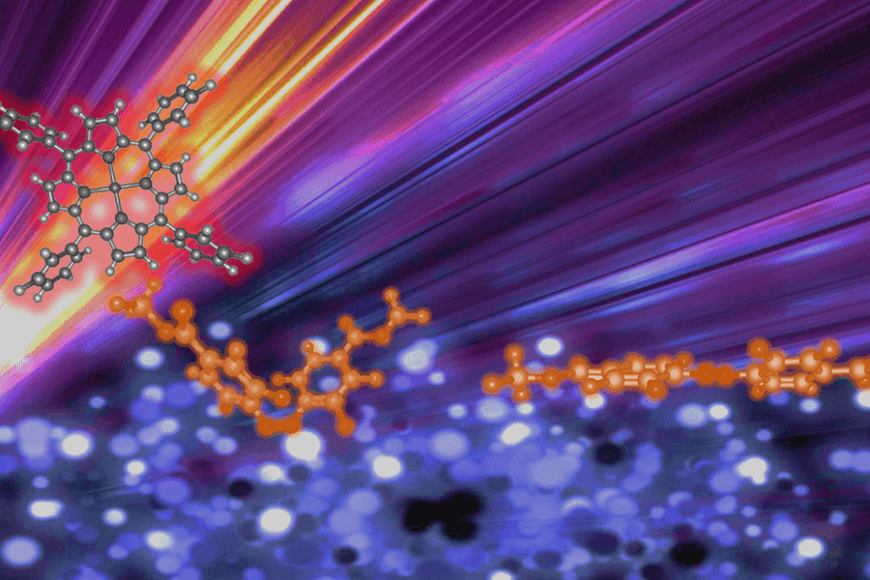
The photoswitching behaviour of azobenzenes is based on reversible changes in their chemical 3D structure in respect to light of different wavelengths. This process of photoisomerization is being widely used in e.g., liquid crystalline displays and sensors. Despite of the progress in the field, vast majority of azobenzenes absorb ultraviolet or visible light which limits their applicability for emerging fields such as light modulation of biological processes and photopharmacology. Therefore, a big research effort is directed to explore ways of activating the azobenzene molecules with safe and convenient red and near-infrared light.
To overcome this issue researchers from Supramolecular Chemistry of Bio- and Nanomaterials and Smart Photonics Materials teams decided to use non-trivial but easy-to-implement way of introducing a second light-sensitive molecule to the system. This molecule represented by porphyrin photosensitizer can absorb red or near-infrared light that azobenzenes cannot do.
“The photosensitizer is designed so that when it is excited, it can donate its energy to the azobenzene via an energy transfer process between the two molecules, which in turn leads to immediate cis-to-trans photoswitching,” says one of the main authors of recent paper, Dr. Nikita Durandin, from Supramolecular Chemistry of Bio- and Nanomaterials group, led by Prof. Timo Laaksonen.
This means that azobenzene molecule bends without being directly excited with red or near-infrared light.
“We envision that this approach combined with the desirable use of red or near-infrared excitation and precise and repeatable control of isomer composition, will emerge as a potent tool for low-energy photoswitching in light-responsive materials to control cell functions and growth for tissue engineering,” adds Prof. Arri Priimägi, leading Smart Photonics Materials group.
The new approach expands the properties of photoswitching systems beyond the capabilities of the azobenzene without chemically modifying the photoswitch at all. This means that many already existing efficient photoswitches could take advantage of the discovery and find new uses in applications where UV-light would be detrimental.
“Our study shows that it is possible to change the way responsive materials change conformations by a convenient red- or near infrared-light excitation without laborious synthetic work. This gives a new powerful tool for people working with soft robotics or even light-activated drug delivery systems,” Durandin and Priimägi complement.
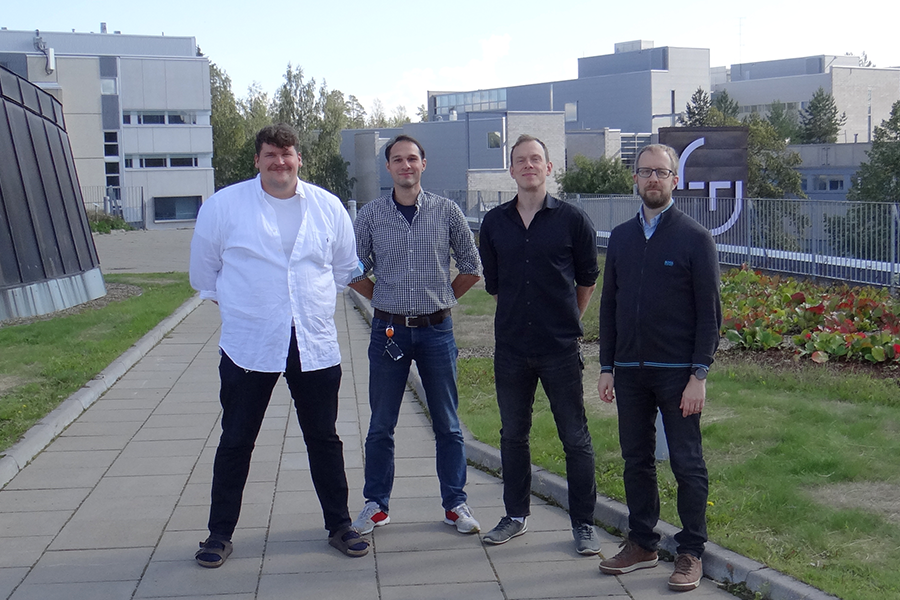
The multidisciplinary consortium in Tampere University also includes doctoral researchers Kim Kuntze, Dr. Zafar Ahmed Dr. Matti Virkki, University Lecturer Elina Vuorimaa-Laukkanen. The research is funded by the Academy of Finland and the European Research Council.
The scientific article on the research Expanding excitation wavelengths for azobenzene photoswitching into the near-infrared range via endothermic triplet energy transfer has been published in flagship journal of Royal Society of Chemistry “Chemical Science”.
Contact
Arri Priimägi
tel. +358 44 515 0300
arri.priimagi [at] tuni.fi
Nikita Durandin
tel. +358 46 951 7878
nikita.durandin [at] tuni.fi


